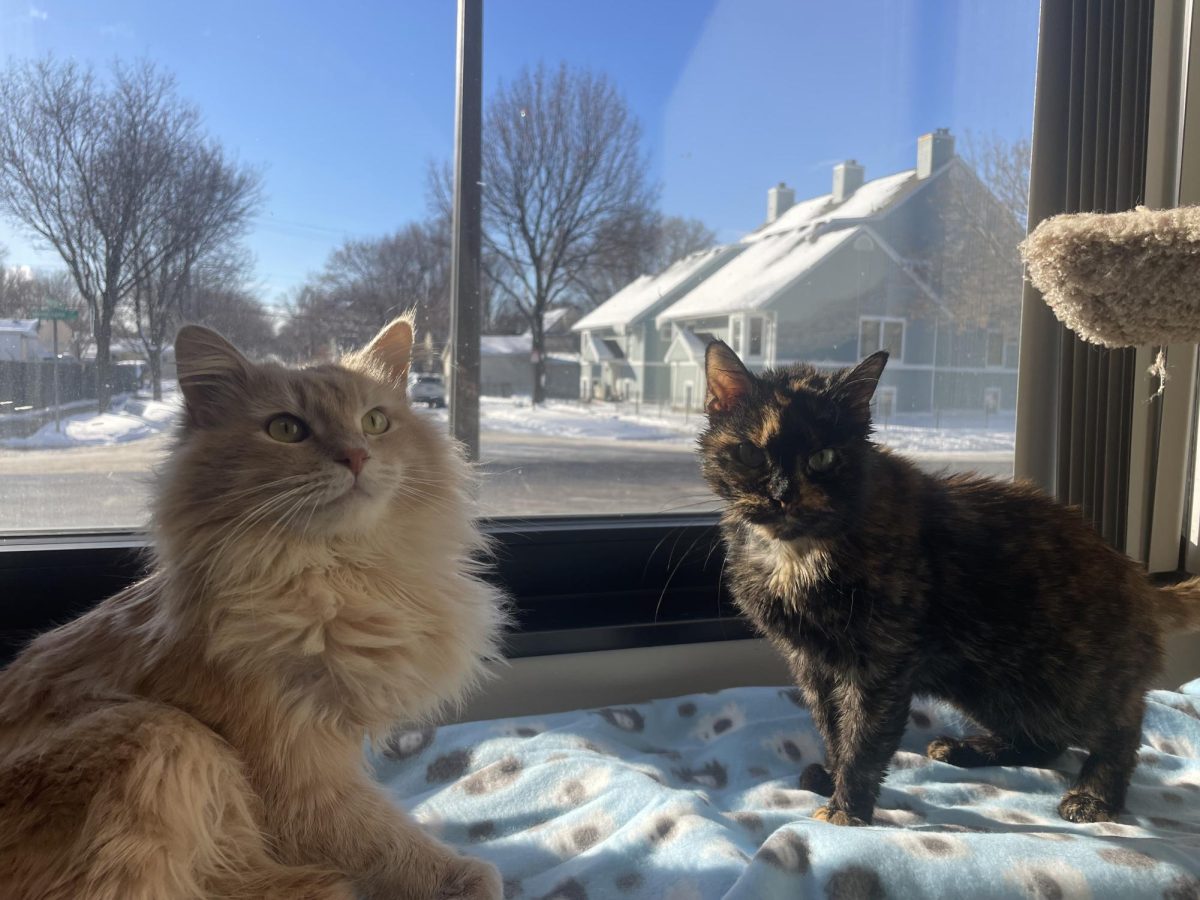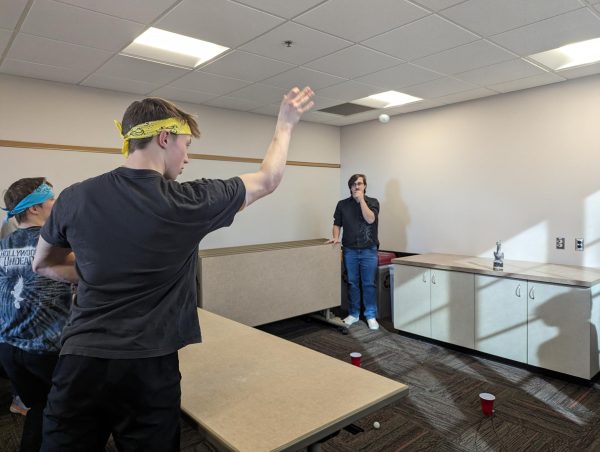Posted on 22 February 2024.
The University of Minnesota Board of Regents made history in 2023 with their first-ever female majority in the University’s history. Eight of the 12 seats are currently held by women and four by people of color.
The Board of Regents is the University governing body providing guidance in carrying out policy. Administrative policies must be in compliance with the goals set by the Board.
According to the University of Minnesota Charter, the legislative document granting legal authority to the University, the regents have specific powers to enact laws, regulate academics, give degrees and diplomas, regulate tuition and fees, and manage University lands.
Historical representation of women and people of color on the Board has been low. Although race or ethnicity for specific regents is considered personally identifiable information under the Data Practices Act and is not available under state law, public biographical data, organizational affiliation, and University records indicate there have been five Black regents, six Asian American regents and one Hispanic regent.
Current Regent Tadd Johnson is the first Native American regent.
The number of elected women has been historically low, with about 15% of 141 regents elected to seats between 1900 and 2000 being female.
That gender rate has more than doubled since 2000, with 38% of 55 elected regents being women. Since 2019, 64% of the 14 appointments have been women.
Former regent and Board chair Linda Cohen said, when Maureen Ramirez and Venora Hung were elected to the Board, first-generation students and students of different backgrounds were prioritized.
“There was emphasis on the diversity of the student body,” Cohen said.
Cohen said people want the Board to reflect the composition of Minnesota, and change is crucial.
“The Board of Regents has a majority of women, and the diversity is great,” Cohen said. “We want the Board of Regents to reflect that.”
History
The first female regent at the University, Alice R. Warren, was elected in 1922, two years after universal suffrage was ratified in the Constitution. In the following 50 years, only six female regents were elected out of 96 regent appointments.
Warren was a University alum, a member of the Board of Directors of the University General Alumni Association and the president of the Minneapolis College Women's Club.
1972 marked the first year more women than men were elected to available seats, with the only two elected regents being Loanne Thrane and Josie Johnson, the first Black regent.
Johnson wrote in her memoir, “Hope in the Struggle,” she was elected to the University Board of Regents in 1971 after the creation of the Afro-American and African Studies department. She was a candidate for one of three at-large positions.
“A lot of politicking took place in the committees during the selection process,” Johnson wrote.
According to Johnson’s memoir, her appointment as regent by Minnesota Gov. Wendell Anderson was managed by Democratic Farmer Labor (DFL) affiliated representative Martin Olav Sabo. She wrote that longstanding work with DFL leadership along with her history of political participation, civil rights leadership and campus activism made her a desirable candidate for regent.
Johnson wrote that, as the only African American candidate on the Board, her suggestions and observations were not immediately acknowledged.
“If a white male member repeated what I had said, the words were heard,” Johnson wrote. “I was interested in agriculture and all other fields of study, but the members seemed to only ask and listen when I talked about diversity issues.
Other schools
The University Board of Regents is the only state school governing body in the Midwest that is majority female. The other Midwestern schools — Nebraska, Iowa, Michigan, Kansas, Wisconsin and more — have a current average female representation of 35%.
The Universities of Illinois, Indiana, Iowa, Kansas and Ohio are tied for second at 44% female representation, or four of nine voting board members. The University of Arkansas has the least with only one female voting member out of 10 on its governing board.
The University of Minnesota is unique in that its regents are directly nominated and elected by the state legislature. Regents in other states, such as in the University of Wisconsin system, are appointed by the governor.
Nebraska is another state system that directly elects its regents. In 2012, 97% of previously elected Nebraska regents were men.
How regents are selected
Regents are elected by the Minnesota Legislature to staggered six-year terms, and one third of the Board is elected each odd-numbered year. In 2023, Ken Powell, Steve Sviggum, Darrin Rosha and Tadd Johnson’s seats were up for election.
At least one regent has to reside in each of Minnesota’s eight congressional districts according to state law. The four remaining regents are elected from the state at large, and one of those must be a University student at the time of the election.
The process of becoming a regent begins with the Regent Candidate Advisory Council (RCAC), a bipartisan group of 24 members elected by the Legislature. Twelve are elected by the Minnesota speaker of the house and 12 are elected by the majority leader of the Senate.
The RCAC will recruit and interview candidates from voting districts and recommend between two and four candidates they consider per seat to the legislature, up to 16 candidates. In front of a legislative session of all 201 members of the House and Senate, voting will eliminate candidates to the final four positions available.
No more than two-thirds of the RCAC members may belong to the same political party, and no more than one-third can be current or former legislators. Geographical representation must be taken into consideration when making appointments.
However, application through the RCAC is not necessary to become a candidate and a legislator can nominate a candidate from the floor during the joint election session.
Regent Bo Thao-Urabe said the RCAC stakeholders from different legislative districts understand representation should reflect the diversity of Minnesota.
“There are at-large seats, but other regents represent particular geographic areas,” Thao-Urabe said. “The body of legislators who are also from those areas give some thought as to what representation might need to look like.”
Thao-Urabe said by nature of the position of regent, the Board is inherently inaccessible. She said she has talked to people who have been dissuaded from running just from how complicated the process is.
“It's a significant chunk of time for somebody to be dedicated to serving on the Board, and just the process itself so it requires some knowledge,” Thao-Urabe said. “It's not every day that people feel comfortable going to a body of legislators and trying to really engage them.”
Politics and elections
Minnesota state Senator Sandy Pappas (DFL) said in a 2023 speech to the University of Minnesota Retiree Association that regent nomination can be a political process, and both Democrats and Republicans can nominate people because of personal relationships or political similarities.
“We need to get our legislative colleagues to kind of think beyond that and think about what the University needs in terms of a good governing board,” Pappas said.
Except for brief periods between 2011-2013 and 2017-2023, the majority leader has been a DFL member since 1973. The DFL Speaker of the House Melissa Hortman has been in office since 2019.
Regent James Farnsworth said the changing composition of the Board is due to the DFL having a majority in both caucuses.
“Wherever a majority is in charge, relationships you have, those are all things that are at play,” Farnsworth said. “Some candidates running may have a political background, but it’s about supporting the University at the end of the day.”
Farnsworth said regents are often selected by what a specific person can offer to the University.
Diversity became an explicit part of the regent selection criteria in 2005 through an amendment to a Minnesota statute, including geography, gender, race, occupation and experience to not include the number of previous terms served.
Legislative analyst Nathan Hopkins said in an email to The Minnesota Daily the diversity provision originated in an amendment sponsored by Pappas and was adopted into the House’s education bill that was being voted on.
Moving forward
Johnson said the Indian Tribes of Minnesota have their two senators, their two congressmen, their attorney general and their state representatives on speed dial. Before former University President Joan Gabel began meeting with the 11 tribal nations regularly, the University and tribal nations had minimal relations.
“Now they are being brought into the process, and a lot of their issues are being brought to the forefront,” Johnson said.
Johnson said having a Hmong person, a Native American person and a Black person at the table makes a difference.
“Everyone looks at life from a different window, and we all bring something to the table,” Johnson said. “Our main charge is to make good decisions for the University of Minnesota and all people.”
Johnson said the new group on the Board looks a little bit more like people in Minnesota.
“We have a nurse, Mary Turner, who will frequently have worked an all-night shift and will come to a regent meeting,” Johnson said. “I think starting off in the 19th century the blue bloods of Minnesota would be on the Board, but more and more working people have been coming on.”
Johnson said it is a great honor to work with the Board in its current state.
“There are discussions that we have that are potentially different than any other group that came before us,” Johnson said.


